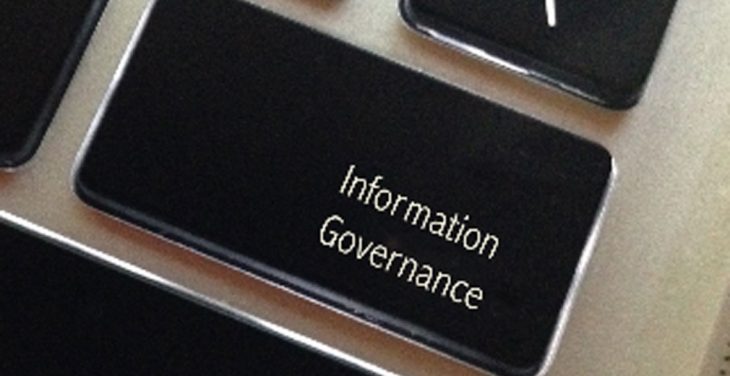Here we cover how to address the problems posed by a legacy system that has inadequate metadata in terms of both detail as well as coverage. Existing document types don’t have the metadata needed to support efficient governance and use, and new document types need to be created. Unless an organization is familiar with the […]

Dark data is simultaneously everywhere and challenging to access. For the past several years, Parascript has been doing research with AIIM and ARMA on dark data such as hard-to-process documents with handwriting. According to IDC, most of “big data” is actually dark data, which is commonly defined as “the information organizations collect, process and store during […]

The importance of metadata cannot be over emphasized as evidenced by John Horodyski’s most recent contribution to CMS Wire. Horodyski of Optimity Advisors makes a strong case for metadata as a critical first step with any project that involves managing content. Apparently, workers waste more than 40 percent of their time searching for existing assets. […]

We are often asked about our classification capabilities, which complement our intelligent image and document capture. Since many solution providers in the document capture arena talk about providing “automatic document classification,” it’s worth exploring what this means. In most cases, it means the act of grouping documents or batch processing for the purposes of identifying […]

I’m revealing my age here (or maybe just my nerdiness), but I remember a 70s movie called “Logan’s Run”. Its main premise was that, at the age of 30, you went to “Sanctuary” where you were supposed to move on to a great next life. Everyone’s happy. Spoiler alert: Logan seeks the truth and finds […]

Information governance takes center stage in Jason R. Baron’s most recent article, and it’s worth the read. He examines recent research findings of The Information Governance Initiative, a relatively new, but very active, consortium focused on advancing the understanding and practices associated with information governance. We’ve all heard (and are probably tired) of big data, information […]

The advent of new channels and devices available for interacting with financial institutions has increased customer choices for remote deposits among other activities while simultaneously creating greater risk. Whether intentional or by accident, the potential for a check to be altered or deposited multiple times on different dates or at different institutions are real and […]
With the age of “big data” and “information chaos” upon us, a lot of attention has turned to how to “tame” the large volumes of information traversing the physical and virtual boundaries of organizations. The concept of informaiton governance, while not entirely new, has taken a larger prominance in media and within industry. Within information […]
There is a great new AIIM whitepaper on use of digital signatures that provides a nice primer on available technologies. You can find it here. There is still a lot of hope for removing the “wet signature” from transactions for obvious reasons: Current methods require a lot of printing, signing, and faxing/emailing the documents around […]
In today’s vast digital world, organizations are scrambling to better control information to meet legal, regulatory, and business requirements. Adding to the challenge is an increasing number of information sources, including online, email, and print. From each of these comes growing volumes of records, receipts, forms, email, and desktop documents and more, further amplifying the amount of information that is out […]
There are a lot of abbreviations and market-speak when it comes to the variety of technologies commercially available to solve the image-to-data problem. OCR, ICR, ACR, NHR, etc. Then there are specific applications of these technologies that further complicate things. Abbreviations like CAR/LAR, MICR, etc. So what are the major differences between OCR and ICR and […]
For years, capture systems have focused on scanning paper documents to create digital versions instead. This fundamental scan-and-store approach helps reduce the costs and inefficiencies of paper-intensive processes. But today, organizations are finding new advantages by bringing the concept of capture out of the back office and into the front line of business process. The […]
A big piece of news occurred a few weeks ago and is still in the process of getting “digested” by the analyst community that tracks enterprise content management; Kofax acquired “signature specialist” Softpro. Among the warmed-over press release rehashes are two good quick write ups by Craig LeClair’s blog over at Forrester and Ralph Gammon’s blog at Document […]
According to the recent AIIM research “Shedding Light on the Dark Data in your Document Capture Processes,” the use of OCR, OMR and barcode recognition is the highest level of recognition technology achieved by nearly 80% of survey respondents. While 22% are using some type of handwriting recognition, it is mostly constrained hand print in […]
As the address recognition providers to the USPS and other major postal operators around the world, we can safely say we know a thing or two about reading addresses.
Blog Topics
- AP/AR Automation
- Automation
- Banking
- Best Practices
- Claims
- Claims and Insurance
- Digital Transformation
- Document Classification
- Fraud Prevention
- Handwriting Recognition
- Healthcare
- IDP
- Information Governance
- Insurance
- Intelligent Automation
- Intelligent Capture Stack
- Machine Learning
- Mortgage Document Automation
- Parascript
- Payment Automation
- Post and Mail
- Revenue Cycle Management
- Ricoh
- Service Providers
- Signature Verification
- State/Local Government
- Straight Through Processing
- Trends
- Uncategorized

